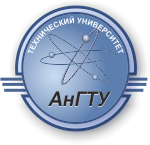According to the results of quantum-chemical studies in the framework of the theory of functional density of the electron density using the B3LYP / 6-311 ++ G (d, p) method, a theoretical mechanism of the reaction of 1,3-dichlorobutene-2 with 1,2-ethanedithiol in the hydrazine hydrateKOH system has been proposed. It has been shown that this interaction proceeds sequentially in several stages, including the nucleophilic substitution of the chlorine atom of the sp3 hybridized carbon atom to the sulfur atom with the formation of a monosubstitution product (SN2 mechanism), which under the action of alkali undergoes deprotonation of the methylene group to form an allyl carbanion . The resulting carbanion, due to the migration of hydrogen and the removal of chlorine, is converted into an allene derivative, which as a result of the intramolecular nucleophilic attack of the free thiolate group on the central carbon atom of the allene fragment closes into the final dithian cycle.
1,3-dichlorobutene-2, 1,2-ethanedithiol, allyl carbanion, reaction mechanism, nucleophilic addition, electron density functional theory, B3LYP, reaction energy profile.








